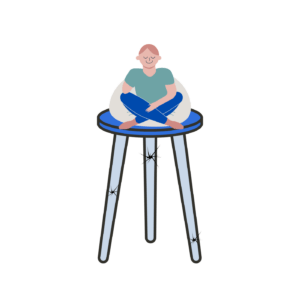We recently worked on a case where a Client had her retirement contributions in each of the above Washington state’s retirement systems during her public service. We got a chance to dive deep, in this post, we’ll break down how contributions work, how benefits are calculated, and what happens if you leave public service.
For Washington State public employees, understanding retirement plans is key to a secure future. The Deferred Compensation Program (DCP) and the Public Employees’ Retirement System (PERS)—specifically PERS 2 and PERS 3—offer distinct features and benefits.
1. Deferred Compensation Program (DCP)
The Deferred Compensation Program (DCP) is a voluntary retirement savings plan that complements PERS 2 or PERS 3. Its key features include:
- Voluntary Contributions: You contribute a portion of your salary, up to the IRS limits—$22,500 in 2024, or $30,000 if you’re over 50.
- Investment Options: Choose from target-date funds and other investment vehicles.
- Tax Benefits: Contributions can be made pre-tax (reducing taxable income) or post-tax (Roth).
- No Employer Match: Employers do not match DCP contributions.
If you leave public service, you can roll over your DCP balance into a qualified retirement account, like an IRA or a 401(k).
2. PERS 2: Defined Benefit Plan
PERS 2 is a defined benefit plan, providing a predictable income in retirement.
Key Features of PERS 2:
- Automatic Enrollment: If you don’t choose PERS 2 or PERS 3 within 90 days, you’ll be enrolled in PERS 2.
- Employee Contributions: You contribute 6.36% of your salary.
- Employer Contributions: Employers contribute 10.39%, though not directly to your pension account.
Benefit Calculation:
Monthly Benefit=2%×AFC×Years of Service
For instance, if your Average Final Compensation (AFC) is $60,000 and you have 30 years of service, your benefit would be:
2%×60,000×30=$36,000 per year, or $3,000 per month
Leaving Public Service:
- Benefits Retained: PERS 2 benefits stay in the system.
- Early Withdrawal: With fewer than 5 years of service, you can withdraw employee contributions. After 5 years, you qualify for a pension at retirement age.
- Transferring: You can transfer benefits to another PERS-eligible role in Washington.
3. PERS 3: Hybrid Plan
PERS 3 combines a defined benefit and a defined contribution plan.
Key Features of PERS 3:
- Employee Contributions: Choose a contribution rate between 5% and 15% for the defined contribution portion.
- Defined Benefit: Smaller than PERS 2, with a 1% multiplier.
- Defined Contribution: Your contributions are invested, with returns based on fund performance.
Benefit Calculation:
Monthly Benefit=1%×AFC×Years of Service
For instance, if your Average Final Compensation (AFC) is $60,000 and you have 30 years of service, your benefit would be:
1%×60,000×30= $18,000 per year, or $1500 per month
Leaving Public Service:
- Rollover Options: You can roll over the defined contribution portion to an IRA or other account.
- Defined Benefit: Stays in PERS 3 until retirement.
Can You Have Both PERS 2 and PERS 3?
No, you can only choose one plan—PERS 2 or PERS 3—within 90 days of employment. If you leave and return in a different role, you may have another opportunity to choose.
Washington State’s DCP, PERS 2, and PERS 3 provide comprehensive retirement options. Whether you value the defined benefit of PERS 2 or the flexibility of investments of PERS 3 and DCP, understanding these options helps ensure a secure retirement.
Consult an advisor to align these plans with your personal goals, risk tolerance and time horizon.
Disclaimer: Nothing here should be considered investment advice. All investments carry risks, including possible loss of principal and fluctuation in value. Finomenon Investments LLC cannot guarantee future financial results. Specific contribution numbers and calculations used are as per state website as on 2024.






